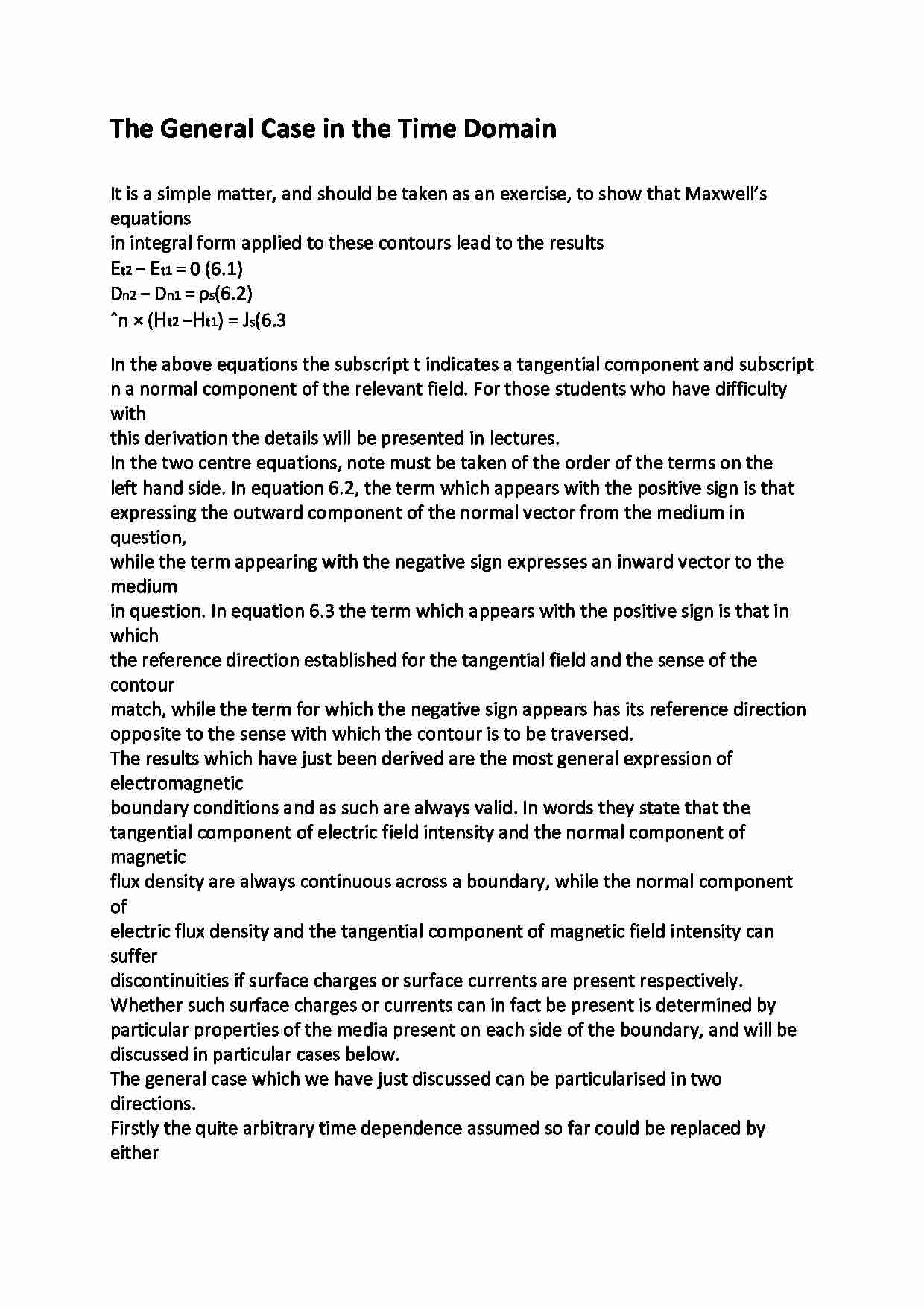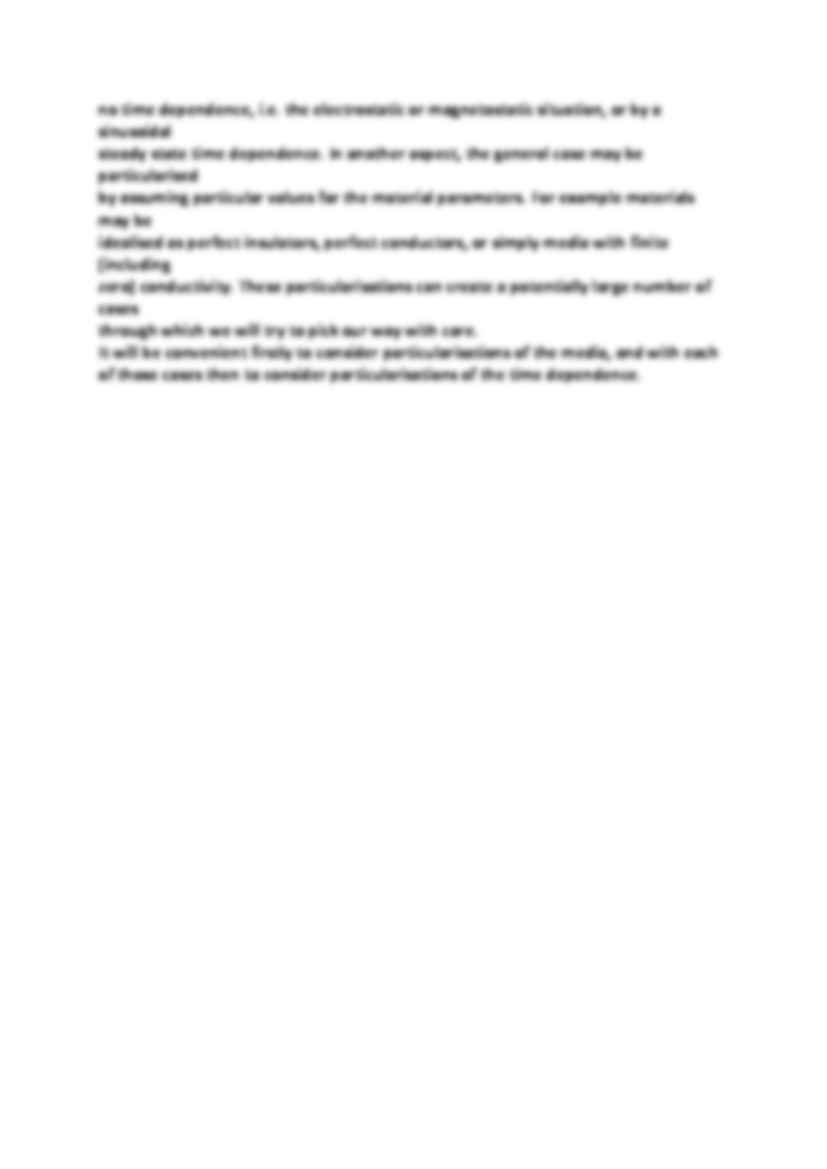To tylko jedna z 2 stron tej notatki. Zaloguj się aby zobaczyć ten dokument.
Zobacz
całą notatkę


The General Case in the Time Domain It is a simple matter, and should be taken as an exercise, to show that Maxwell's equations
in integral form applied to these contours lead to the results
Et2 − Et1 = 0 (6.1)
Dn2 − Dn1 = ρs (6.2)
ˆn × (Ht2 −Ht1) = Js (6.3
In the above equations the subscript t indicates a tangential component and subscript
n a normal component of the relevant field. For those students who have difficulty with
this derivation the details will be presented in lectures.
In the two centre equations, note must be taken of the order of the terms on the
left hand side. In equation 6.2, the term which appears with the positive sign is that
expressing the outward component of the normal vector from the medium in question,
while the term appearing with the negative sign expresses an inward vector to the medium
in question. In equation 6.3 the term which appears with the positive sign is that in which
the reference direction established for the tangential field and the sense of the contour
match, while the term for which the negative sign appears has its reference direction
opposite to the sense with which the contour is to be traversed.
The results which have just been derived are the most general expression of electromagnetic
boundary conditions and as such are always valid. In words they state that the
tangential component of electric field intensity and the normal component of magnetic
flux density are always continuous across a boundary, while the normal component of
electric flux density and the tangential component of magnetic field intensity can suffer
discontinuities if surface charges or surface currents are present respectively.
Whether such surface charges or currents can in fact be present is determined by
particular properties of the media present on each side of the boundary, and will be
discussed in particular cases below.
The general case which we have just discussed can be particularised in two directions.
Firstly the quite arbitrary time dependence assumed so far could be replaced by either
no time dependence, i.e. the electrostatic or magnetostatic situation, or by a sinusoidal
steady state time dependence. In another aspect, the general case may be particularised
by assuming particular values for the material parameters. For example materials may be
idealised as perfect insulators, perfect conductors, or simply media with finite (including
zero) conductivity. These particularisations can create a potentially large number of cases
through which we will try to pick our way with care.
It will be convenient firstly to consider particularisations of the media, and with each
... zobacz całą notatkę




Komentarze użytkowników (0)